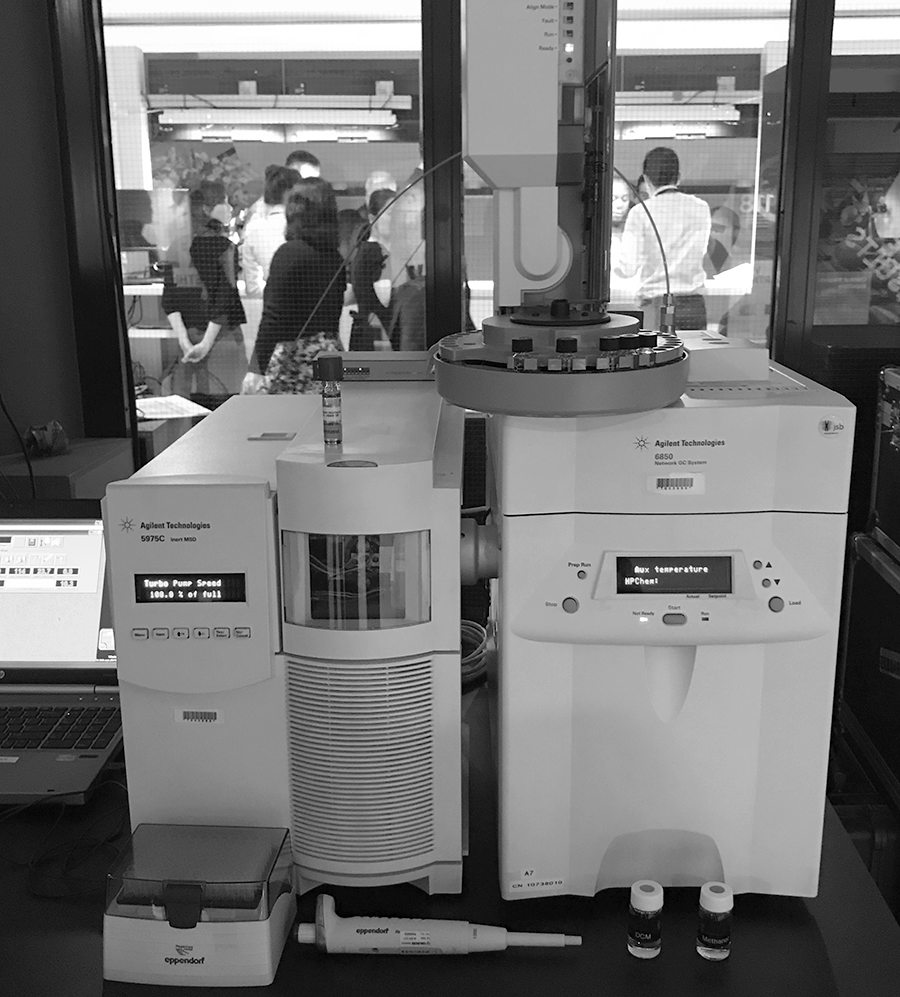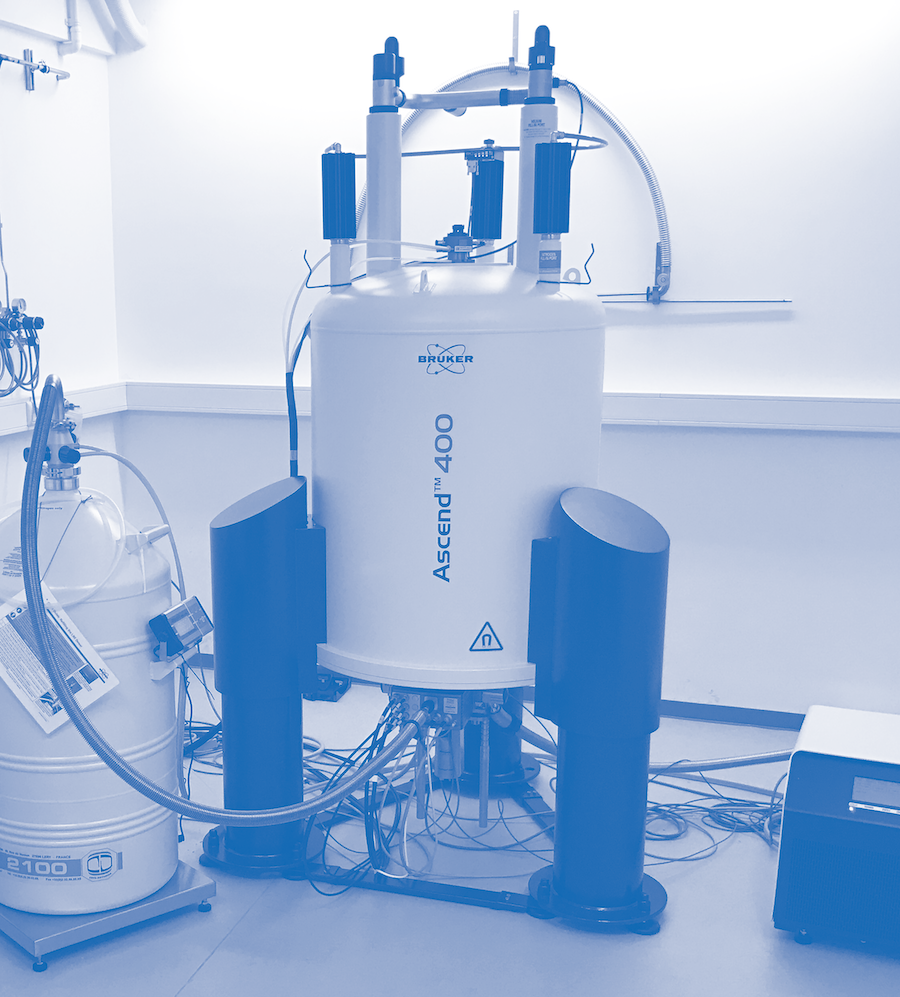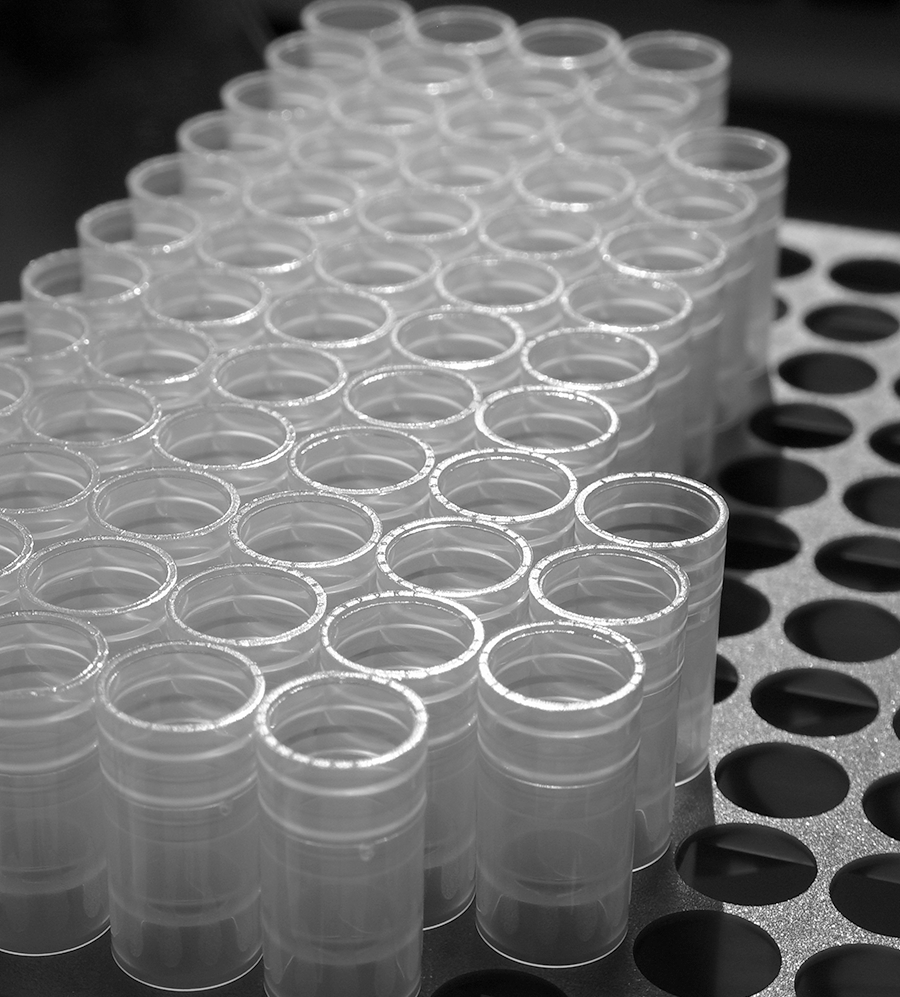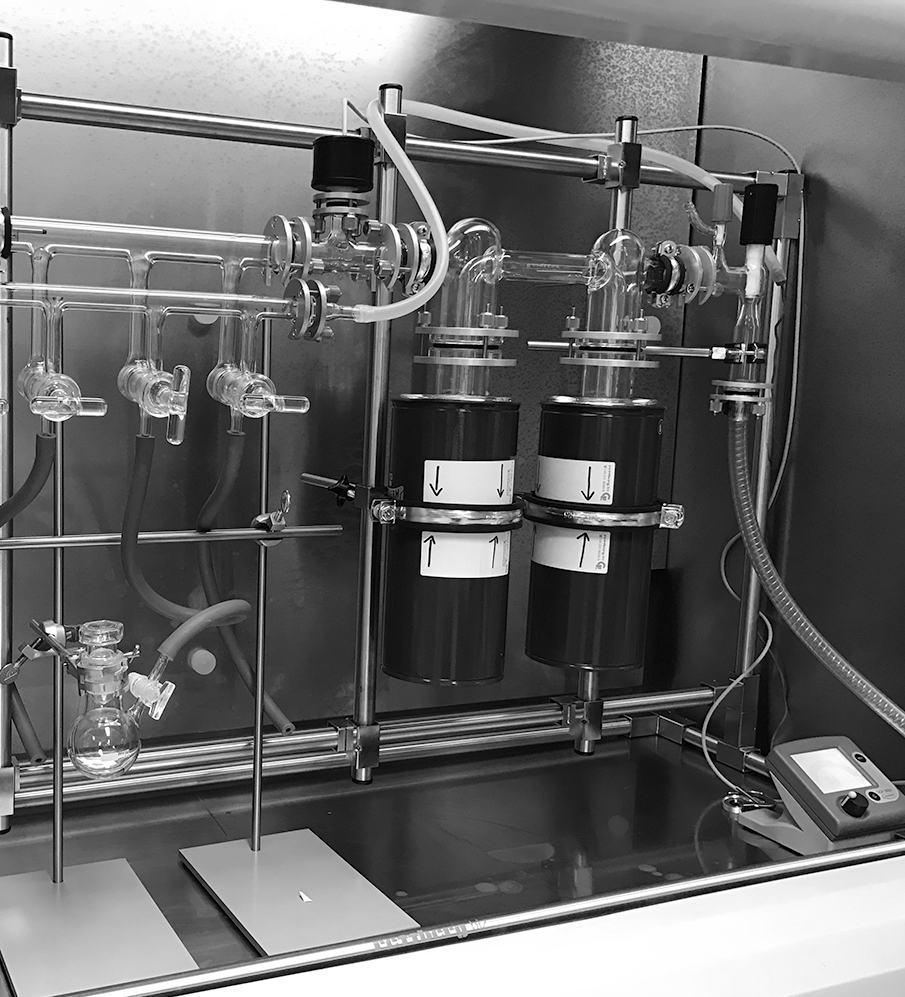Analytical Chemistry is a science on the edge of nothing.
Analytical Chemistry
Analytical chemistry is central for the detection and identification of chemical threat agents but also in the identification of toxins and the identification of radiological threats. It answers the basic questions about the presence or absence of a relevant substance (qualitative analysis) and if desired about the amounts present (quantitative analysis).
Instrumentation
The choice of the right instrumentation, the establishment and validation of the best available methods, their integration into in an efficient laboratory workflow under appropriate quality control and operated by experienced and skilled staff are essential for the mission success of a laboratory.
While instrument performance specifications are important in decision making there are many other factors that influence a final procurement decision. Ease of use (this includes software), future proofing, price : performance ratio, availability of qualified on-site service are just a few.

GC-MS(/MS)

The traditional work-horse for the analysis of chemical warfare agents, their precursors an degradation products is gas chromatography coupled to mass spectrometry (GC-MS). In addition to Electron Ionization (EI) that allows comparison with databases such as the OPCW Central Analytical Database and the NIST library, Chemical Ionization (CI) – is often used to obtain molecular weight information based on the molecular ion. The use of GC-MS(EI) and GC-MS(CI) is sufficient for compound identification and confirmation in OPCW (environmental) Proficiency Tests and still the most used combination of analytical techniques.
GC-MS/MS is also important in the analysis of biotransformation products from biomedical samples.
LC-MS(/MS)

Liquid chromatography coupled with mass spectrometry is the prime analytical technique in the analysis of biomarkers and metabolites in biomedical samples (usually either blood/plasma or urine) but is also an important technique in the analysis of environmental samples.
The use of liquid chromatography avoids the need for chemical derivatization that must be conducted with polar compounds in GC techniques reducing the number of sample preparation steps.
Atmospheric pressure ionization (API) methods are normally used (electrospray (ESI), ionspray (IS) and atmospheric pressure chemical ionization (APCI)) in either positive or negative ion mode.
NMR

Nuclear Magnetic Resonance spectroscopy is not only a highly valuable method during the screening process but also very useful as a method for compound identification. Due to its completely different detection principle compared to mass spectrometry NMR is a perfectly orthogonal analytical technique. This adds additional credibility to a compound confirmation via a second analytical technique.
 NMR is able to reveal atom connectivity. In combination with high resolution mass spectral data this is highly valuable for structure elucidation of unknown chemicals of interest.
NMR is able to reveal atom connectivity. In combination with high resolution mass spectral data this is highly valuable for structure elucidation of unknown chemicals of interest.NMR also allows the elucidation of site-specific isotope ratios in a molecule relevant in chemical forensics.
High-resolution
mass spectrometry
High-resolution MS realized with Q-TOF or Orbitrap instruments allows a much higher mass spectral resolution (normally unit resolution). This yields additional information, e.g. the accurate mass of the compound of interest that can be used to deduce its elemental composition. Combined with a technique that yields information on bonding and connectivities this is particularly useful for identification of unknowns.
HRMS instruments (especially Orbitraps) can also be used to determine stable isotope ratios in compounds.
GC with element
specific detectors
Element specific detectors, such as NPD or FID, provide powerful means for the screening of samples. A particularly useful detector for the analysis of CW related chemicals is an atomic emission detector (AED) coupled to a GC. Detection of compounds containing elements usually encountered in CW agents (P, S, As, Cl, F) can be easily achieved with very high sensitivity and excellent selectivities.
While element specific detectors do not allow are not sufficient for compound identification they are highly valuable tools in the early screening stages of analysis.
Other
instruments
There are of course other useful instruments, some of them with more niche or specialized applications. Examples include FTIR and Raman spectroscopy, ICPMS and XRF for inorganic analysis, ion chromatograph and FPLC as separation techniques.
Functional assays and immunological techniques such as ELISA find applications in toxin analysis and analysis of biological threat agents.
The detection of ionizing radiation and corresponding radionuclides requires specialized instruments depending o the type of radiation.
Sample preparation

Sample preparation is key to analytical success and one of the main error sources.
Derivatizations, extractions, concentration and dilution steps, precipitations, separation steps and liquid handling require meticulous work practices but also the necessary equipment.
(Micro)synthesis

Identification of unknown compounds not found in databases requires reference chemicals. Some of them might be commercially available but many are not.
Microsynthesis of such compounds is a central capability of an advanced analytical laboratory. A dedicated synthetic workplace is advisable.
We are assisting our clients with the selection and procurement of a suitable instrument park. Our goal is that you get the right equipment to fulfill your mission goals.
We provide or assist you in method development and validation as well as the establishment and in-house validation of internationally accepted analytical methods.
We help our clients to establish and maintain a microsynthesis capability (in accordance with the non-prohibited purposes of the Chemical Weapons Convention) for rerence chemicals.

